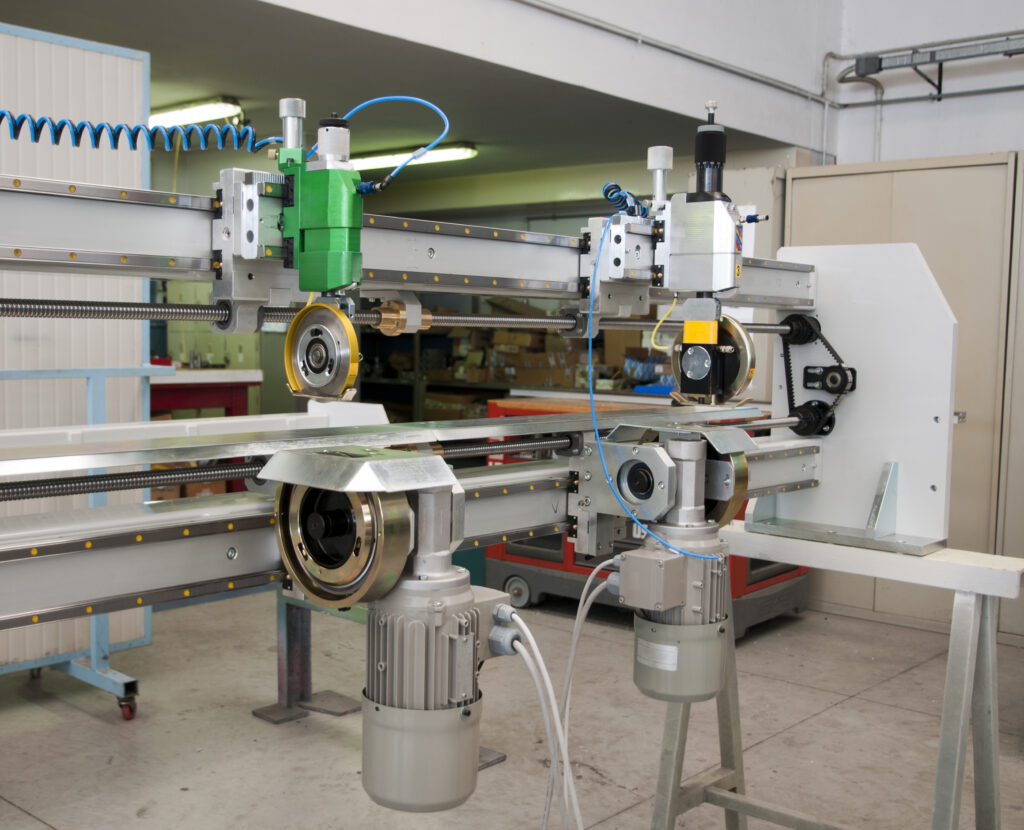The Inside Scoop on Electric Actuators

Electric actuators convert electricity into energy that is used to create either linear or rotary motion in a wide variety of industrial automation applications across many industries. Despite their prevalence, many of us don’t know what’s inside an electric actuator and how the various components work together to provide the energy that powers so many of the machines and devices we encounter in our lives.
Common Applications for Electric Actuators
Electric actuators are widely used throughout industry because they provide efficient and reliable motion in automated equipment and devices that lower, push, pull, raise, rotate or position a load. Because they use electricity to generate the motion and, therefore, can provide enhanced motion control and higher levels of precision, electric actuators tend to be used in more complex or critical applications. Electric actuators are also typically the actuator of choice in industries or applications, such as food and beverage processing or medical device manufacturing equipment, where a “clean” method of motion control is a requirement. Additional advantages of electric actuators include energy efficiency and durability as they are known to require very little maintenance over the lifetime of the device.
Some common applications include:
- Robotics: Electric actuators are commonplace in robotics because they provide extremely precise motion control with high levels of repeatability. Using them in robotics enables automated equipment and robots to bring reliability and accuracy to application.
- Valve Operation: Many processing facilities rely on valves to control the flow of raw materials into the process. Electric actuators are often chosen to open and close valves in these applications because they provide high levels of precision and repeatability, ensuring quality and consistency in the process, which is essential in chemical, pharmaceutical and similar applications.
- Food and Beverage Industry: While pneumatic actuators use compressed air and hydraulic actuators employ hydraulic fluids, electric actuators rely on electricity to operate. Electrical operation provides a “clean” source of motion, making electric actuators suitable for food and beverage processing applications, as well as chemical, pharmaceutical and medical device manufacturing.
- Material Handling: Because they provide efficiency and precision along with durability and reliability, electric actuators are often employed in material handling applications such as servo presses and in equipment found in the packaging sector.
Types of Electric Actuators
Linear electric actuators are available in two basic types, rod-style and rodless. The more common rod-style actuators produce motion by retracting and extending the rod from the housing. The load is moved either by being attached to the rod or by being pushed by the rod. Rod-style actuators offer an enclosed housing, which prevents debris or contaminants from entering the actuator.
Rodless electric actuators, on the other hand, do not have a rod, so they transport the load via a guided carriage attached to a belt or a screw, which provides support for high loads and offers a smaller footprint while providing a similar stroke length. They may be selected for heavy-duty applications or critical ones.
Electric Actuator Components and Operation
Electric actuators work in the same way as both pneumatic and hydraulic actuators but use electricity as the input that gets things moving. In other words, electricity powers a motor, which triggers internal components to move, providing mechanical energy and motion to the application. Here, we will take a closer look at the components that power most electric actuators, as well as the internal components that generate the motion in equipment and devices.
The components described below allow electric actuators to function as follows:
To operate, the electric actuator requires a power source, which is either AC or DC voltage. A controller allows the actuator to perform the required motion by sending a signal to the drive. After receiving a signal from the controller, the drive applies the appropriate current and voltage to the motor causing its output shaft to rotate. In a rod-style actuator, the motor is coupled with a helical screw, which rotates inside a hollow piston rod containing a ball screw nut. As the helical screw rotates, the ball screw nut and piston rod assembly are driven forward or backward along the helical screw, creating motion of the equipment attached to the piston rod. A feedback device provides positional information to the controller which directs the actuator to move to a certain position, stop, continue on or return to its original position.
It should be noted that in a rodless electric actuator, there is no piston rod. Instead, the load is mounted to a carriage or block that carries it along the length of the actuator. Rodless actuators can be driven via a belt or screw.
To function properly, it’s essential that electric actuators are made of high-quality, durable materials and provide the highest efficiency possible. A reputable manufacturer or supplier, such as JHFOSTER, will be able to provide electric actuators with these qualities in both rod or rodless styles that are designed to meet the needs of the application. Contact us today!
